HYDROVANE – JSD DROGUE – DON’S RUSSIAN ROULETTE?
HYDROVANE – JSD DROGE – DON´S RUSSISCHES ROULETTE?
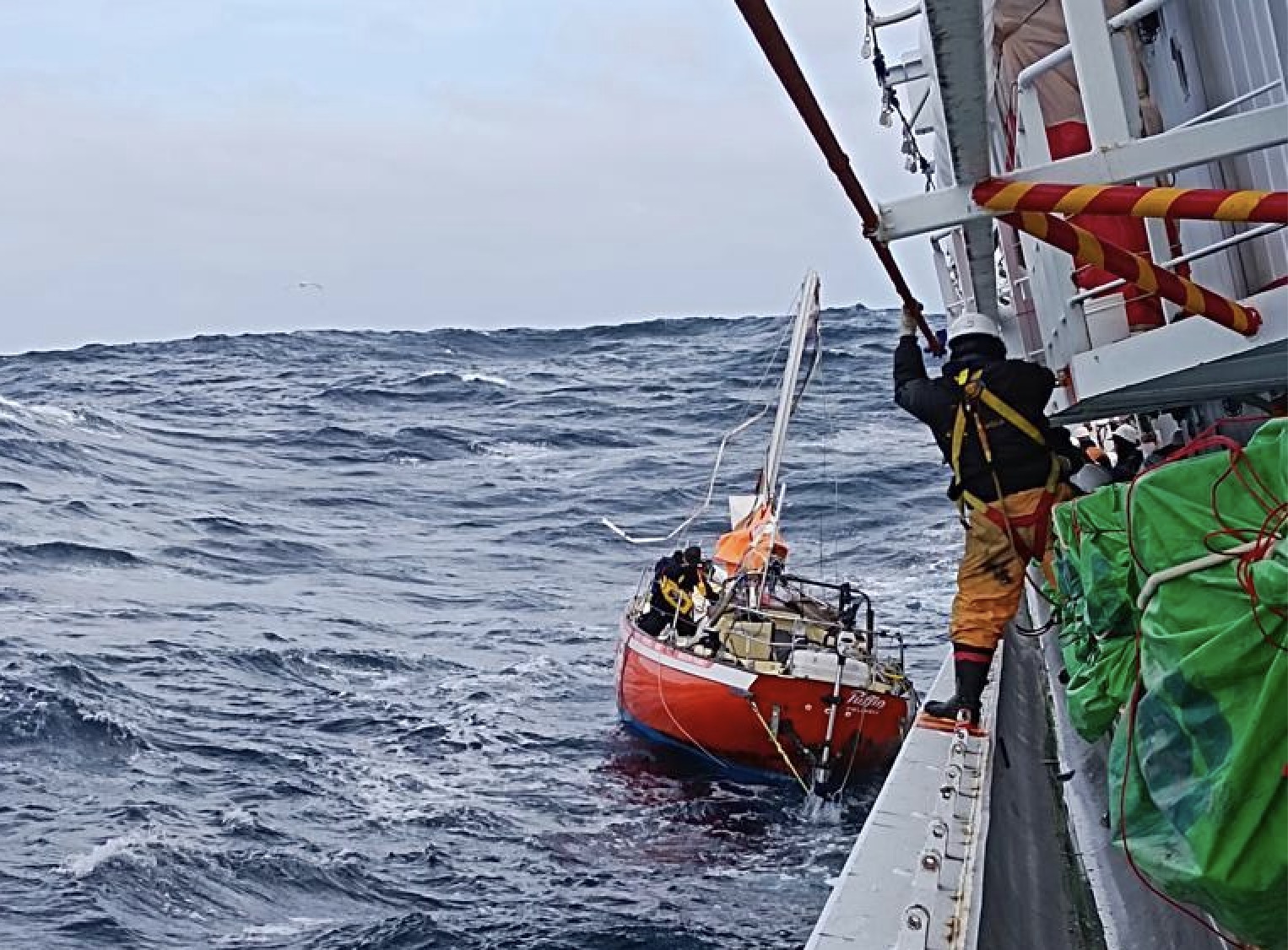 Puffin’s skipper disembarked for the final time on 11 April 2023 and is now making leisurely progress towards Cape Town. Puffin, meanwhile, has been left to her own devices, presumably because attempting to scuttle her at the moment of transfer to fishing vessel Zi Da Wang was considered to be too risky. What if it took several attempts to pluck the sailor from his yacht? Coordinating the timing could have been extremely difficult: safety first!
Puffin’s skipper disembarked for the final time on 11 April 2023 and is now making leisurely progress towards Cape Town. Puffin, meanwhile, has been left to her own devices, presumably because attempting to scuttle her at the moment of transfer to fishing vessel Zi Da Wang was considered to be too risky. What if it took several attempts to pluck the sailor from his yacht? Coordinating the timing could have been extremely difficult: safety first!
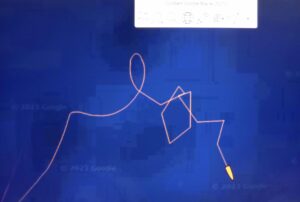 Free (or condemned) to follow the whims of current and weather, Puffin is now drawing interesting patterns on the chart and will presumably continue to do so for as long as the AIS has enough juice to keep going or until the organiser of the GGR decides to hide the track on his website. The skipper reported that the hull appeared still to be watertight, so the Tradewind 35 could well carry on floating and drifting for some time even after it disappears from our screens.
Free (or condemned) to follow the whims of current and weather, Puffin is now drawing interesting patterns on the chart and will presumably continue to do so for as long as the AIS has enough juice to keep going or until the organiser of the GGR decides to hide the track on his website. The skipper reported that the hull appeared still to be watertight, so the Tradewind 35 could well carry on floating and drifting for some time even after it disappears from our screens.
Puffin, then, has become a ghost ship. Less romantically, she has also become a far from trivial hazard to shipping, a live bullet in an involuntary game of Russian roulette being played by all craft in the vicinity. Collateral damage of the GGR?
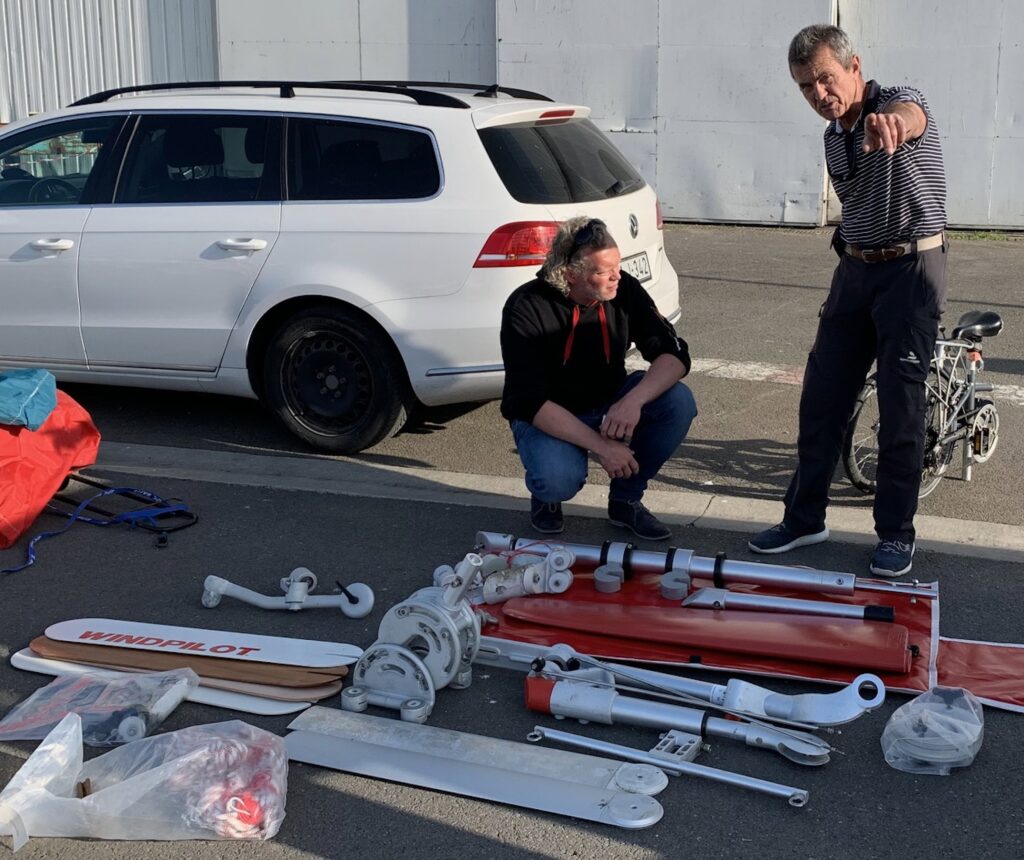 Puffin is evidently a particularly tough cookie too, surviving a total of twelve severe storms with winds over 50 knots and three knockdowns in the 2018 GGR according to Robin Knox-Johnston’s report.
Puffin is evidently a particularly tough cookie too, surviving a total of twelve severe storms with winds over 50 knots and three knockdowns in the 2018 GGR according to Robin Knox-Johnston’s report.
Puffin, I hope you will excuse me for mentioning, was guided last time by my Windpilot Pacific: a journey of 263 days and 30,000 nm from LSO all the way back to LSO, where, with the camera rolling, the set of spare parts and the full replacement system I had provided were returned to me unused. Thus ended a most unedifying chapter of my life brought about by the coinciding priorities of a skipper who had the gall to blame – in public for all the world to see – a windvane self-steering manufacturer for his own poor planning (choosing a boat with an unsuitable wheel steering system) and an event organiser who could have tried rather harder to resist temptation, specially the temptation of trying to use the situation to boost the standing of the competing windvane self-steering system of a different type marketed by his own sponsor.
My vow not to have any involvement in future editions of the GGR proved impossible to keep – and the reason was human nature. I believe as a matter of firm principle that all my interactions with sailors should be founded on mutual respect. If financial interests are allowed to take precedence over fair and equitable dealing, the prospects of a mutually acceptable outcome plummet. Play this out on a public stage with social media “experts” racing to make their voice heard and passive-aggressive emojis filling the space where meaningful words should be and mutual disappointment – at best – is virtually assured.
The GGR 2018 was a milestone of the worst kind; an experience one wouldn’t wish on anybody. The moment Ian Herbert-Jones”>Ian Herbert-Jones bought Puffin, a weight lifted from my shoulders and I could breathe freely again. The transom was clear for a new adventure – an adventure I would be able to follow with close interest but none of the tension of having skin in the game. Although as things turned out, of course, Puffin has given all of us observers some rather tense hours anyway.
The current edition of the GGR has been underway for eight months, eight months over the course of which my concern and anxiety about the unfortunate consequences of the GGR organiser’s preferred auxiliary rudder system for his protégés have grown and grown. Did he not think things through quite thoroughly enough? Did his sponsor not quite give him the full picture? Asking entrants to carry an emergency rudder is perfectly reasonable of course, but might the organiser perhaps have overlooked the fact that the presence of an auxiliary rudder system on the transom could well prove a hazard to skipper and vessel in the very worst of storms?
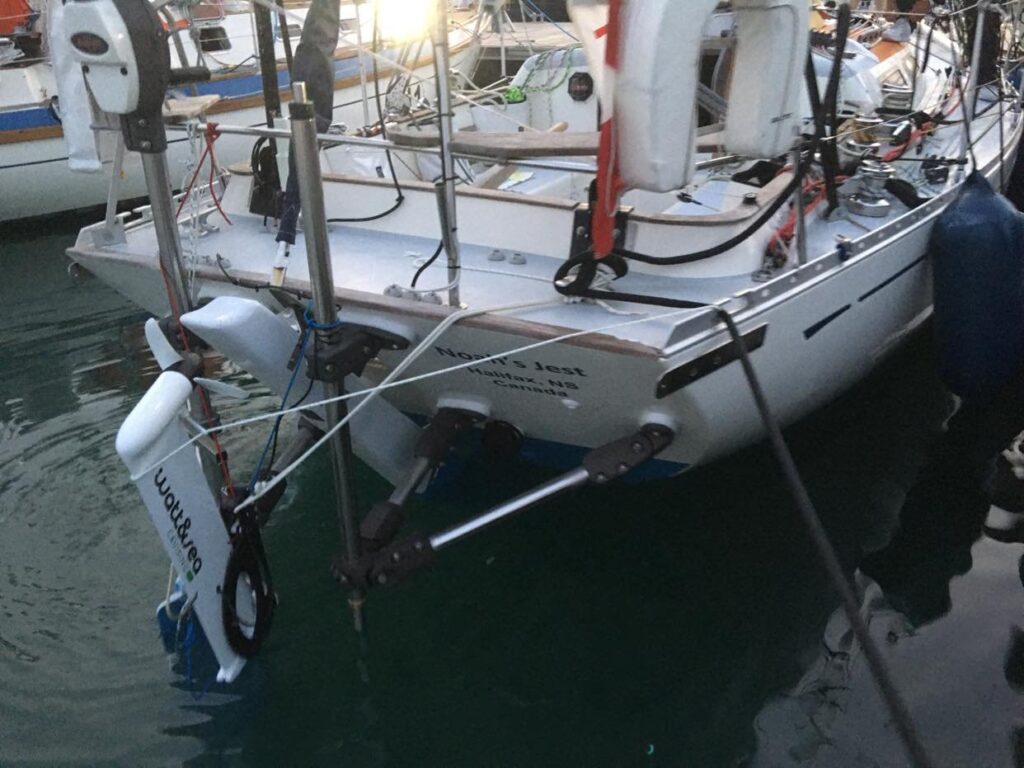
credit Edward Walentynowicz
Weighing up the situation prior to the GGR 2018, I came to the clear conclusion that auxiliary and double rudder systems would not be suitable. I answered enquiries regarding my own double rudder system with an explanation of why it would not be a good idea and refused to entertain any suggestions that I might like to supply one for the event. Once it was over, I set my reasons out again for everyone to read in my book Windvane Report.
Having published separate articles on my blog about the assistance rendered to Puffin in Patagonia by Caroline and Mark van de Weg (owners of the polar-tough Jonathan) and my recent correspondence with Nehaj-Susanne (Susanne Huber-Curphey) over the last few weeks, it seemed to make sense to combine the two and seek Susanne’s thoughts on Ian Herbert-Jones’ misfortune:

Hi Susanne,
So Neptune has caught the Puffin and claimed it for himself. Thank goodness her skipper was spared.Which brings me straight on to the critical question of prudent practices in severe conditions. Don and RKJ have put forward different theories in the past based on their conclusions drawn from the experiences of individual skippers but have held back from issuing any clear recommendations. Ever since the GGR first appeared on my radar in 2016, I have advised skippers only to consider my Pacific. Any who asked about the Pacific Plus I left in no doubt as to the risks and potential complications of using that type of system in this type of event. It looks as though my reservations were well founded.
Ian’s JSD system tore the auxiliary rudder off the Hydrovane when he deployed it in the South Pacific, hence his well-documented reluctance to use it during the most recent storm. This carefully considered decision to leave the JSD stowed was probably the final straw leading to the loss of the boat. Where does that leave the organiser, who promotes this particular windvane self-steering system (and earns money for his efforts) in part by suggesting that being able to use the auxiliary rudder as an emergency rudder qualifies it as safety equipment. Don’s GGR has almost two full editions behind it now and while it hasn’t lacked for drama, none of the entrants has yet had need of an emergency rudder. Don obviously has no choice but to continue defending his sponsor’s honour and I’m sure you and I both expect him to do just that, but it seems to me the evidence accruing is going to make that task harder than ever.
I can’t find the reference now but Aries advised during the GGR 2018 that the pendulum rudder should be removed before deploying a drogue system to avoid the risk of damage. What do you do about the pendulum rudder if you have to lie to the JSD?Best wishes from the chilly streets of Hamburg,
Peter
Susanne was quick to reply:

St. Martin, 13.04.2023
Hi Peter, I agree with most of what you say, but don’t forget the skipperless “Puffin” is actually still out there evading Neptune’s grasp and ploughing the GGR furrow.
As you know, I am a firm believer in the Jordan Series Drogue (JSD) and include a detailed description of its use in my Chapter 14 of the new (2022) edition of Heavy Weather Sailing
It has been 20 years since used the Jordan Series Drogue for the first time. The conditions were the worst I have seen over those two decades and we had already been knocked down once before Tony – with a nasty head wound – and I launched the JSD for the very first time. The sea state actually deteriorated further once the drogue was streamed and the breaking seas became really extreme. Nothing much changed conditions-wise in the seemingly endless 41 hours that followed but we weathered it all safely and did not even come close to another knockdown. Coincidentally this all happened quite close to where Ian ran into trouble.
Absolutely correct: you have to remove the rudder blade from your self-steering gear and stow it securely below deck. Jeanne Socrates bent her Hydrovane irretrievably like this during her solo non-stop in 2019.
I have given a great deal of thought to the loss of Puffin two days ago. Ian activated the EPIRB and the tracker SOS function at a time when he and the boat were still intact but reported in a telephone call with race control that he was hesitant about using his Jordan Series Drogue. Ian knew about the weather report forecasting gusts to 98 knots and had six hours’ warning of the 100-nautical-mile-wide storm front heading his way and still he was not persuaded to change his mind and bring out the JSD.
Two hours after this phone call, Puffin was rolled and yet another boat from the GGR (on top of the many examples from the GGR 2018) was left to carry on on its own after the rescue of its skipper.
The situation must have been terribly traumatic for Ian. I can’t imagine what it would have been like to steer the boat manually under bare poles in conditions like those. I hit my limit with this once in the Great Australian Bight: when the boat started surfing down a wave with a powerful breaking crest, neither I nor the Aries could keep the boat on course with the tiller. When the spreaders touched the water, I knew it was high time to put the JSD to work.
As I have been telling anyone who will listen for years, under conditions like those, the Jordan Series Drogue is the only option left for traditional boats.
Regards from the Caribbean, Nehaj-Susanne
A few hours later the following e-mail landed:
 UPDATE St. Martin, 15.04.2023
UPDATE St. Martin, 15.04.2023
Hallo Peter, Nehaj and I are just setting off on the passage from the Caribbean to Europe, but I did still manage to read your new blog. The most recent position of the abandoned Puffin on the GGR tracker page is time-stamped 0800 hours UTC today, which means the poor boat is still afloat out there in the South Atlantic and therefore a hazard to shipping – especially other yachts of course. You wrote “Puffin is now drawing interesting patterns on the chart and will presumably continue to do so for as long as the AIS has enough juice to keep going.” It is important to point out that these “interesting patterns” are only visible on the GGR tracking page, which uses the position transmitted
AUTOMATICALLY by the Yellow Brick tracker on board Puffin. These little units have excellent battery life and will keep going for many months. I have been using a similar handy and easily operated tracker from a different supplier for the midday position I have been transmitting (manually) every day since June 2018 so that friends who know where to find the website can follow my progress online (click on “View All Tracks”). The fact that I send the position MANUALLY makes it a reliable indication that I am still at the controls.
People need to realise that these tracker positions are sent via Iridium satellite and are ONLY accessible online and only to those who know the long and complicated address. What this means is that yachts and other vessels navigating in the same area as Puffin will NOT be able to pick it up on AIS because the tracker signal is NOT broadcast locally on VHF. Online, the whole interested world knows Puffin’s latest location, but with nothing transmitting on radio frequency, the boat is effectively invisible by the usual means for other vessels in her vicinity. For me this is absolutely unacceptable in terms of safety at sea.
I hate to think what might happen if another boat were to run into such an uncontrolled “invisible” yacht at speed. The IMOCAs in the ongoing Ocean Race, for example, are travelling at up to 30 knots.
In the GGR 2018, Gregor Mc Guckin’s boat was abandoned not that far from my position at the time after a September storm in the central Indian Ocean. The organiser of La Longue Route was kind enough to send me the positions of the boats in the GGR, which was underway at the same time, every few days via amateur radio e-mail. The position of Gregor’s drifting boat was displayed online until the end of January and then the signal suddenly disappeared. We can only speculate whether the batteries had died or the boat had actually sunk. I have still not been able find any information about the yachts left abandoned and drifting during the GGR 2018 and race management remains eerily silent on the subject.
It is theoretically possible that Puffin is transmitting an AIS radio signal on VHF as well as the YB tracker signal, but the AIS would draw probably a thousand times as much power as the single tracker burst sent via satellite every couple of hours (perhaps even just once a day). The most recent AIS position I could find online for Puffin was on Vessel Finder and was 20 days old.
Best wishes,
Nehaj-Susanne
First we saw Damien Guillou and PRB suffer multiple instances of damage, then Asteria effectively disappeared from under von Tapio Lehtinen’s feet and now we have the Puffin abandonment, a situation I find particularly sad because it seems to me the factors that precipitated it are written into the DNA of the GGR in its current format. We will have to wait and see whether the organiser is willing and able to draw the necessary conclusions and implement the necessary responses for future editions of the GGR. It is very much to be hoped that he is!
Ultimately (and obviously), the safety of the GGR gladiators must come before anything else. Emergencies at sea of the type we have seen cannot just be accepted as some kind of occupational hazard. Change is possible if the organiser is prepared to take the requisite steps to put the wellbeing of his heroes first. If this does not happen, there is, as we have seen, a real possibility of what has become an intriguing and at times exciting event deteriorating into a game of Russian roulette, responsibility for which can only be laid at one door.
It might seem surprising that a manufacturer of windvane self-steering systems feels the need to articulate these ideas. The thing is, I find it very difficult to imagine a press hungry for headlines but markedly averse to in-depth investigation (and the controversy it might ignite) taking any interest in the now-obvious baked-in risks of an event like the GGR.
If for no other reason, decisions to improve safety at sea need to be taken as a simple matter of respect for the sailors who make the event. After several near misses across two races, there can be no doubt that lives are at risk. The evidence is clear, the case is compelling: it is time for Don McIntyre to act.

Peter Foerthmann
Hamburg 15/04/2023
FURTHER READING
JSD Drogue



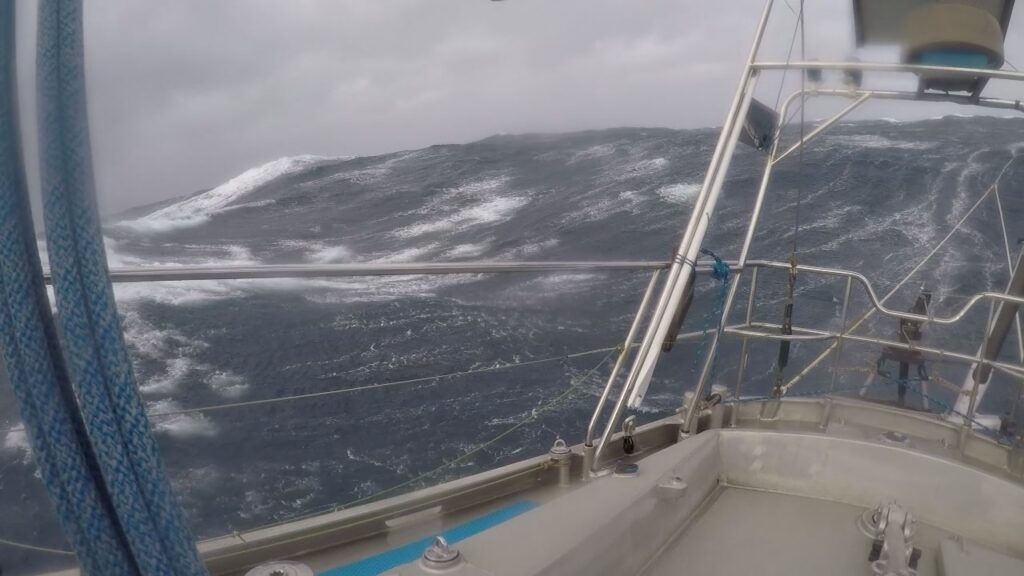






























The Windpilot is the one that gives the skipper the most options in all situatios. When I spoke to Ian the day he bought the boat from Istvan I advised him not to plug the holes of the, then taken of, windpilot.
A lot of things are learned since then!
Happy to hear from you Peter.
Cheers
Hi Peter;
Puffin’s abandonment is a sad story and perhaps lessons can be learned so that such a fate can be avoided by others in the future. (I realized that such a statement is easy for me to make at I write you from the comfort of my living room.) Had another self-steering unit been selected for use, particularly a Windpilot Pacific, the in-the-water paddle could have been easily and safely removed prior to the deployment of the drogue.
As to the drifting Puffin, I wrote Don McIntyre about my “scuttle plan”, praying I’ll never need it. It involves closing the seacock for the galley sink drain (just about every boat I know of has a dedicated seacock for the galley sink) and cutting a notch in the rubber hose to the sink. Then as one abandons ship, one opens the seacock. Water will enter the boat, but not at a rate that precludes a safe and measured abandonment of the vessel. It will sink over a number of hours, but it will eventually sink.
The last few days of the GGR are most exciting. Abhilash is doing great, but the 25 hours he owes Kirstin will be hard to overcome.
Regards,
Ron Canizares
Hi Peter
I have the Windpilot and love it. Quite simply, it is the last bit of kit I would want to part with. Reliable, and have never had any problems setting it up. BUT, although I have a JSD and have never had to use it, I wonder how I could safely remove its rudder before deploying the drogue. If the weather had already deteriorated significantly, slowing down enough to get the rudder out of the water would be pretty difficult, with a possibility of damage to the gear. I guess the solution is to act really early? What are xour thoughts?
Yours aye,
Bill (Kinsa)
Dear Bill,
the snwer is rather straight … and simple of course: I will adress this in a sep. message within some days.
take care
Peter